Optimize your website (SEO-compliant) - but how?
The question of why you should optimize your website almost answers itself. You want to be found and seen. This is why the topic of search engine optimization (SEO) falls into the category of marketing. In addition to SEO, there is also search engine marketing (SEA), which represents "paid" advertising on search engines such as Google.
The way SEA works is comparable to "normal" paid advertising. A company wants to bring itself or its products to the top of the paid section of a search engine. One factor for the SEA ranking is the amount of money paid per click(pay per click). As a search engine wants to deliver relevant results, it is not only the highest bidder who is at the top of the results list. Other factors such as the time spent on the redirected page or the general ranking of the website also play a major role.
OnPage optimization
The general ranking can be improved by optimizing the website. A distinction is made here between on-page and off-page optimization.
On-page optimizationrefers to the structure and content of the actual website. A distinction can be made here between the technical (search engine) and the user view . These overlap, but should be considered separately.
In der folgenden Darstellung wird links die technische Sicht gezeigt, rechts was der User auf der Webseite sieht. Dieses einfache Beispiel zeigt, dass das menschliche Auge im ersten Fall (a) klar zwischen Überschrift und Text unterscheiden kann und im zweiten Fall (b) beides identisch ist. Der Crawler einer Suchmaschine würde in beiden Fällen ganz klar die Überschrift aufgrund des < h1 >-Tags identifizieren.

Comparison-technical-and-user-view
Überschriften mit < h1 >-Tag sind sehr wichtig und sollten den Inhalt der kompletten Seite widerspiegeln. Auch andere < h >-Tags werden priorisiert „gecrawled“. Stellt sich die Frage: „Warum nicht alles im h1 bis h6 auf der Website haben und für die Lesbarkeit die Formatierung ändern?“
–>Einfache Antwort: Weil ein < hx >-Tag eine gewisse Länge nicht überschreiten darf und nur eine bestimmte Anzahl an Tags vorhanden sein dürfen. Ansonsten wirkt es sich negativ auf das Ranking aus.
The correct use of keywords plays a key role in on-page optimization. These are elementary in order to get a "match" at all between the search engine query and our website. In other words, no keywords -> no match -> not in the search engine results. This is why everyone should consider the following questions:
- Who do I want to reach (target group)?
- What does my company stand for?
- Which "product" do I want to offer on my website?
- Where do I want to reach my target group (locally, regionally, globally)?
- What is my goal (to increase brand awareness, sell products, etc.)?
Daraus kann der Kontext, in dem wir bei einer Suche auftauchen wollen, gebildet und die Keywords bestimmt werden. Die definierten Wörter sollten nun sinnvoll auf der Seite verteilt werden. Insbesondere in Überschriften, Bildbeschreibungen, Linktexten, der Meta Description, < title >-Tag.
Other ways to optimize the website OnPage are the sitemap, robot.txt and generally "clean" source code. Performance and structure should also not be neglected. Therefore, the website should offer a responsive design or a mobile version and unnecessarily performance-consuming scripts should be avoided.
The article "SEO - Do's and Dont's on your Homepage" describes the topics and methods of on-page optimization in more detail.
OffPage optimization
Off-page optimization is about building the reputation of a website. Key terms in this context are backlinks and PageRank[1]. Backlinks are links from other sources that refer to our website. The PageRank algorithm forms the basis for identifying high-quality pages based on the ratio of incoming links to outgoing links. In its original form, a website was considered based on the relationship between "incoming" and "outgoing" links (link juice flow).
The better the ratio of incoming to outgoing links, the higher the PageRank. The basic functionality and the original algorithm are explained a little more clearly below with the help of the greatly simplified illustration and the calculation with matrices:

Graphical representation of how the link juice flow influences the ranking of a page
Assuming that each page has 100% "link juice", this is distributed evenly across all outgoing links (one link = 1, two links = 0.5, etc.). For the calculation, the share of each link is stored in a matrix. Thus for "b.ch" "a.de" = 1, as only one link goes from b to a. For "a.de" "b.ch" and "a.de" "b.ch" 0.5 each, as 2 links go from a. The developed matrix (1) is multiplied by the vector representing the "random surfer" (2). The random surfer is assumed to randomly click on a link and land on the respective page referred to (as this does not really reflect reality, it was replaced by the rational surfer in 2010 in order to give the placement of the links a higher weighting). The result is an initial ranking (3a). This intermediate result is again multiplied by the matrix (1) and the same is done with the result (3b). This step is repeated iteratively until there is no more change in the ranking.

PageRank calculation with the help of matrices
Since the PageRank algorithm was published, many adjustments and improvements[2] have been made (more on this in the article Do's and Dont's on your homepage). However, the basis is still as described in this article. Of course, PageRank is not the only criterion, but it is a fundamental and easy criterion to take into account when creating and developing your own website.
[1] The PageRank Citation Ranking: Bringing Order to the Web (1998)
[2] Some major Google updates in the SEO context: Rational Surfer (2010), Panda (2011), Penguin (2012), Hummingbird (2013), Pigeon (2014), Mobile Update (2015), RankBrain (2015)...
